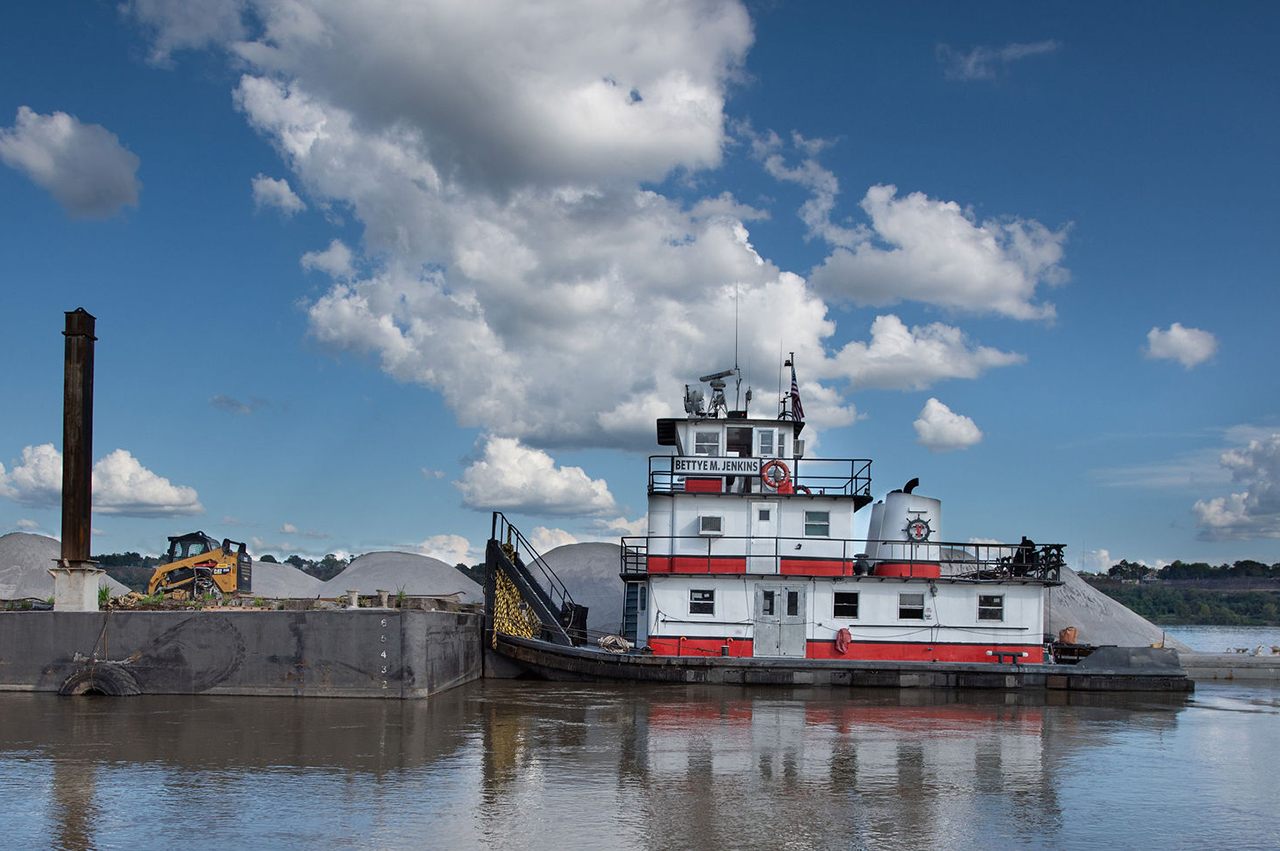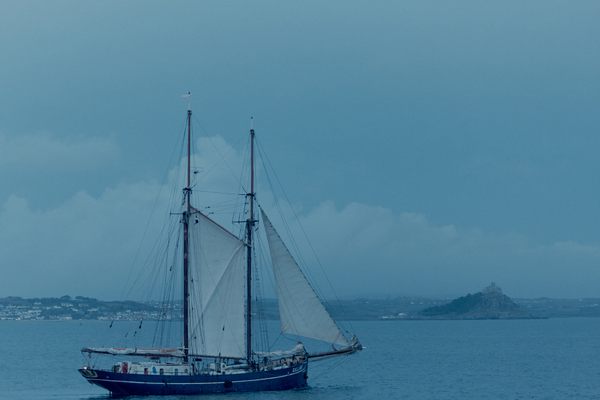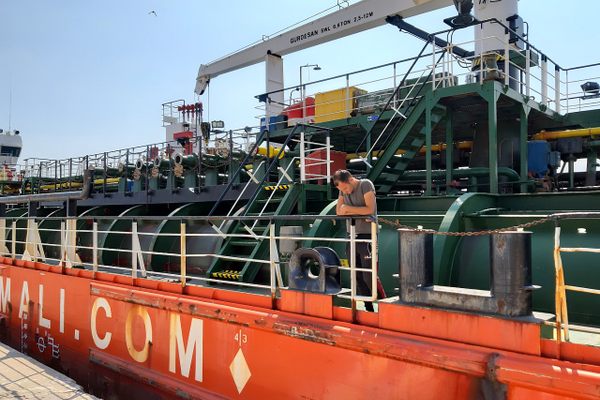The Triumphs and Tribulations of Towboats on the Mississippi River
“You ride the river and just hope you’re in the right spot when you need to be.”
For Carla Jenkins and her barge company, Vidalia Dock & Storage, the best towboat trips down the Mississippi are boring. What she worries about are all the ways they can get interesting.
A runaway barge could t-bone a bridge, sending cars plunging into the water below. The crew could fish the cold body of a woman out of the water, only to find that she has survived a fall of 120 feet without so much as breaking a bone. A deckhand could crush his leg between two barges and beg the surgeon to be careful amputating, because his work boots are new and just too nice to ruin.
The towboat crews of Vidalia Dock & Storage, headquartered in Vidalia, Louisiana, are tasked with loading, unloading, lodging, and transporting barges up and down the Mississippi. Jenkins’s deckhands often serve as mechanics and even impromptu rescue crews for boats that break down, run aground, hit bridges, catch on fire, and the like. For the past few months, they’ve been working on a two-year contract to move enormous barges full of crushed limestone from Harahan to Marrero, Louisiana.

It’s not a long journey. Depending on boat traffic, a round trip usually lasts three to four days. From the boat launch at Harahan, the crew will pick up six barges full of rock, push them through heavy traffic past the city of New Orleans, and steer through the Algiers Lock onto the Gulf Intracoastal Waterway. (If the Mississippi is a major interstate, the ICW is a backroad primarily used by barges to access locations off the main path, such as their destination in Marraro.) Upon arrival, the crew will drop off the rock to be used in a construction job in southern Louisiana and pick up empty barges to immediately transport back to Harahan.
The journey begins on a muggy afternoon in July, when Jenkins’s captain, Pat Deckard, steers a 2,520-horsepower towboat, the Vidalia Dock, out of the Harahan Launch. A few hundred yards away, a row of barges are parked like cars along the riverbank, weighed down in the water by 3 million pounds of rock each. They’ll transport six at a time to Marrero—9,000 tons of cargo lined up in two parallel rows.
The front of the towboat features rubber-padded columns, which are known as tow knees. The captain steers the towboat so that the knees align with the center of the first two barges. Then the deckhands leap over and secure them using winches, cable, Spectra line, and lock line, and the boat backs out into the middle of the river.

At around 10 miles per hour, they slip under the Huey P. Long Bridge, which was the first built in Louisiana across the Mississippi River, and they pass by the French Quarter, the oldest and most famous neighborhood in New Orleans. From inside the wheelhouse, disembodied voices with Southern, Cajun, and Italian accents call out over the radio from the surrounding tugs, oil tankers, ocean liners, and cruise ships, all trying not to hit each other. A few hours pass this way until the traffic dies down, the sun starts to drop, and the captain steers the bow into the side of the Algiers bank for the night.
Across the water, on the outskirts of New Orleans, flames lick the tops of refineries along the darkened shoreline. Here, the Vidalia Dock will wait its turn to go through the Algiers Lock, which acts as a sort of door for river traffic between the Mississippi and the ICW. Boats are raised and lowered by way of the lock’s enclosed chamber, so that they can safely move between the two channels, which run at different water levels.
Jenkins came to work for her father’s business 38 years ago, and she’s been running the company for over 15 years now. On the trip to Marrero, she dangles her cowboy boots under the railing, lights a cigarette, and points it at passing vessels, critiquing their engines, propeller systems, and the business acumen of their owners, whom she’s had to deal with for years. “Most of them think I’m the secretary when they first meet me,” she says.

She frequently gets unwelcome calls in the middle of the night from her crew. Once, she was told that a collision with a bridge had left a gash in the side of a tank barge. “Now, that tank could be loaded with polystyrene, a CDC, I don’t know,” she says, using an industry acronym for hazardous materials, Certain Dangerous Cargo. “But I’m tucking my nightgown into my jeans and I’m jumping on a boat screaming down the river with all our floodlights on.” The gash was 35 feet long, and the tank was full of oil. “Couldn’t even light a damn cigarette,” she says. Fortunately, on that night, the gash stopped just inches short of penetrating the tanks.
Because they typically lack propulsion of their own, barges strike bridges with some frequency. Sometimes they sink; once, a rice barge sank to the riverbed, and when the millions of grains hit the water, they expanded, warping the steel walls of the barge. Other times, they break loose and Jenkins’s deckhands have to go chasing them down like cowboys roping cattle. “You have no control out here,” Captain Deckard says. “You ride the river and just hope you’re in the right spot when you need to be.”
In the morning, it’s finally the Vidalia Dock’s turn to go through the lock and onto the ICW, which runs all the way to Texas. At the higher water level of the Mississippi, the towboat moves into the lock chamber. Once inside, water is slowly released through the front gate, dropping it down to the lower level of the Intercoastal Waterway. From here, the trip takes several crawling hours as the welding shops and steelyards along the banks are slowly replaced by a wilder landscape—sunbathing alligators, still waters, and kudzu plants swallowing the rusted bones of abandoned ferry boats along the banks.

In Marraro, Louisiana, a small towboat named the Rougarou, after the Cajun swamp monster reminiscent of a werewolf, helps the crew tie up the rock barges to a row of barges in the Ten Mile Exchange fleet, located, as the name suggests, 10 river miles up the ICW from the Mississippi. Then they secure six empty barges to the tow knees, and the captain immediately turns the boat around for the homeward journey.
In the early evening, the captain pushes into the bank to once again wait for the lock, and the crew argues over the best way to rid your boat of a snake, a rat, or a raccoon (sling it like a lasso, use lighter fluid, don’t leave the galley door open in the first place). This leg of the trip is usually peaceful, almost dull, but Troy Hollis, one of the deckhands, says not to let that fool you. “Some deckhands sleep on the boat like they at the Holiday Inn. But if something happens out here, no need to kick my door in to tell me.” he says. “Troy’s already gone.” In the 11 years he’s been doing this, he’s worked in snowstorms, alerted the authorities to dead bodies floating past the barges, and jumped from sinking boats.

One time, while standing on the end of the tow and helping turn loose a barge from another boat, his captain reversed, yanking him right off his feet and between the two. “All I could hear when I hit the water was those big ol’ engines,” he says. Falls off a barge are often deadly, but Hollis got lucky. His captain was warned just in time to keep the hulls from pushing back together.
But he can’t imagine working anywhere else. This industry employs more than 33,000 mariners. These guys work 14 days on, seven days off. Some even do 30 or more days straight on the boat. As another deckhand, Wesley Douglas, puts it: “I live here. My house is where I visit.”
At 3 a.m., the lockmaster directs the Vidalia Dock back onto the Mississippi. It slips quietly past the French Quarter and back under the bridges to drop off the empty barges, pick up more loads, and start the whole cycle over again. The only other people who are awake at this hour seem to be other towboaters, whose barges carry not only rock but also chemicals, lumber, grain, and so many other materials to be used all over the States, and even shipped across the Atlantic Ocean.

In a year, the U.S. domestic maritime industry grosses around $33.8 billion, and American towing vessels move more than 760 million tons of cargo. Towboats do have their disadvantages: At speeds averaging 5 to 15 mph, they’re not the fastest mode of transportation, and unlike trains and 18-wheelers, towboats can only ship to places on navigable waterways. For these reasons, trucks transport far more freight than either water vessels or trains, which are also limited by inflexible scheduling and confinement to particular tracks.
Water vessels are still the lowest cost per ton-mile of any mode of transportation, though. An 18-wheeler can hold 40 tons, an average freight car can hold 125, and one large barge can hold 1,800 tons. According to a 2009 study by the Texas Transportation Institute, barges emit only 19.3 tons of CO₂ per million ton-mile, in comparison to 26.9 tons for freight trains and a whopping 71.6 for trucks.

Captain Deckard says this two-year contract alone is a 3 million ton job. “Imagine if you took the barges away,” he says. “Do you know the amount of trucks you’d put on the road?”
But it can also be dangerous and grueling work. A towboater never knows whether the barge run is going to go right or very, very wrong. River life takes a different kind of person, the kind who doesn’t know what to do on dry land, where things might be a bit more predictable. “It’s kind of like the last frontier out here,” says Jenkins. “It’s a lifestyle, not a job. It has kicked my ass many a year, but I’m no quitter and neither are my guys.”
Correction: This story originally stated that a barge can carry 30 million pounds, and a group of six barges can carry 90,000 tons. The actual capacities are 3 million pounds and 9,000 tons, respectively.












Follow us on Twitter to get the latest on the world's hidden wonders.
Like us on Facebook to get the latest on the world's hidden wonders.
Follow us on Twitter Like us on Facebook